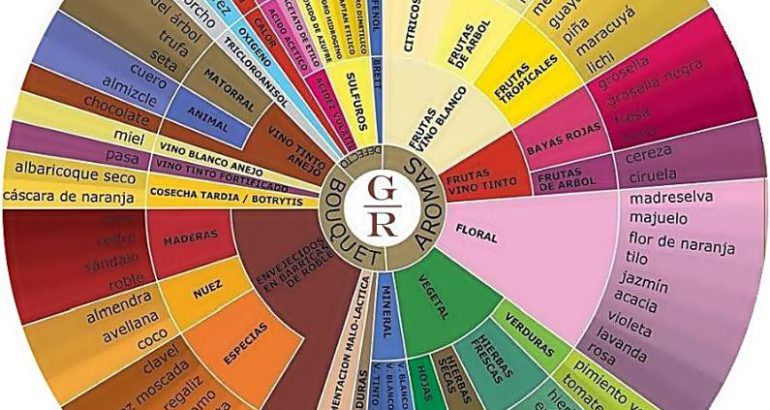
How to smell wine
If we talk about the sensory analysis of wine, we can find that the word aroma has two different meanings. First, it is synonymous with aromatic substance. This term is used to designate the set of aromatic substances in wine. And secondly, the word aroma refers to the smell, to the impression that wine produces to the sense of smell through retro nasal route. The aroma of a wine is the most important characteristic but it is also the most difficult to discover.
When we taste a wine, the sense of smell is very important, because we are looking for all kinds of aromas, both pleasant and unpleasant. If we are tasting a young red wine we find aromas of red fruits, but if it is a mature red wine we will look for deeper and more complex aromas. The fruit and freshness will continue to appear, but in a more subtle, drier way, aromatic species, leather, moist earth, mushrooms or nuts will predominate. If the wine has gone through barrel, we will find aromas of wood, toasted and smoked, chocolate and even vanilla among others.
If the wine we are tasting is a young white wine, then we will look for fresher scents such as white fruit such as banana and pear, tropical fruits such as pineapple and mango or white flowers such as chamomile. Now, if the white wine is ripe, the smells of honey, nuts, jams and even yeasts such as freshly baked bread will stand out.
How to smell wine:
The presence of some or other compounds in the aromas depends on some factors such as the weather, the soil, the variety of the grape and the oenological and viticultural treatments. That is why from here a first classification is made of the odors that the wine gives off.
- Primary Aromas:They are characteristic aromas of the grape or the grape, their smell depends on the variety that belongs, the composition of the soil and the climate. The impression it gives us on the nose is floral, vegetable or fruit aromas.
- Secondary Aromas: This type of aromas appear because of the vinification (alcoholic fermentation and malolactic fermentation). They depend on yeasts and fermentation conditions such as temperature. The secondary aromas could be related to the pastries since they remind us of cakes, dairy, caramel, cheese …
- Tertiary Aromas:Also known as bouquet, it is the stage where you find more aromas. They have their origin in the aging process, that is, during the aging of the wine in the barrel and the ripening time in the bottle. Although they are mainly balsamic aromas, nuts, toasted or wood we also find fruit, floral, tobacco, coffee, leather, understory and more aromas.
But this classification of aromas is not the only nor is it the most significant at the time of assessing an aroma or an odor because there is another classification that has achieved more appropriate and specific terminologies. Specifically in the year 1984 Ann Noble published a standardized terminology of aromas known as the wheel of aromas. These are divided among the great aromatic families; floral, fruity, spicy, vegetative, nuts, caramelized, wood, earthy, chemical, caustic, oxidation and microbiological. Each family is divided into a sub family of aromas and the possible descriptions to be found in the wine are cited.
Finally, it is important to mention that as the wine is in contact with oxygen, we will find more odors, many of these must be found when tasting it. That is why smell and aromas are very important in winemaking, because to taste a wine it is necessary to have a good smell and, consequently, to know how to differentiate the different aromas.
